Search by alphabetical topics All ABCDEFGHIJKLMNOPQRSTUVWXYZ
-
 Rent Arrears
Rent ArrearsWhat can go wrong? If your motives not to pay the rent are justifiable then you can start a procedure where you can fight and counterclaim.
Defenses
The following are the most common defenses that can be used by tenants against claims for rent arrears possession:
· If the property is suffering from some sort of disrepair, then the tenant can file a counterclaim that can be offset against the rent arrears claim.
· If the tenancy deposit scheme rules have not been complied with the tenant can file a counterclaim for the penalty to be offset against the rent arrears.
· If the rent arrears schedule does not contain a full record of payments made by the tenant for which he or she has proof of paying.
The court may adjourn proceedings to give the tenant extra time to resolve any housing benefit problems.
· If the claim for possession is following a serving of a Section 21 Notice the following defenses can be raised:
The Section 21 Notice is invalid.
The tenancy deposit has not been protected in one of the prescribed deposit schemes and/or the landlord has not provided the tenant with the relevant information in line with the tenancy deposit rules.
The tenant’s property is part of an unlicensed House of Multiple Occupation.
The Hearing
The case will be listed for a hearing if the Standard Possession Procedure has been used by the landlord.
If the landlord uses any of the mandatory grounds for possession or possession under Section 21 Housing Act 1988 the Judge will be bound to make an Outright Possession Oder if it is proved that the tenant is in breach of the mandatory grounds for possession and/or the requirements of Section 21 have been fulfilled by the landlord.
Court Orders
Outright Possession Orders
This will require the tenant to vacate the property by a specified date. A Warrant of Eviction will need to be applied for by the landlord if the tenant does not leave the property by this date.
The possession can take place forthwith after the hearing or withing 14 or 28 days. If the tenant can show that they will suffer exceptional hardship by leaving early, then the possession can be postponed by up to 42 days by the Judge.
Suspended Possession Order
This means that the tenants can remain in occupation of the property as long as they comply with the terms of the order. For example, if the possession was based on rent arrears the Court may allow a suspended sentence as long as the rent is paid in full plus an amount towards the arrears. If the terms are not met the landlord can apply to the court for eviction by bailiffs.
Adjournment
The judge can adjourn case if he/she is unable to make a decision on the case. The adjournment can be for a specified period or indefinitely.
Dismissal
The claim can be dismissed for the following reasons:
· The correct procedure for bring the case to court has not been followed by the landlord
· It has not been proved by the landlord that any grounds for possession have been breached.
Money Judgement
If the judgement for possession is on the grounds of rent arrears, then the Court will also issue a money judgement against the tenant. This requires a sum of money to be paid by the tenant to the landlord which will be the amount claimed for rent arrears plus Court costs.
Court Costs
In the event of a possession order being made the tenant may be required the pay the legal costs of the landlord commencing possession proceedings.
After the hearing
Tenant without fail will received the copy of the possessing order from the court which will set out in detail the order made by the judge during the possession hearing and explain in details what the each party responsibilities are or will be.
Challenging the possession order
In some cases, the tenants can challenge the possession order by making an application to set inside or vary the possession order. How can tenant in this untenable situation do this!
· If they do not attend the hearing due to ill health /exceptional circumstances
· The tenants were not notified of the heating date
· The tenants did not receive the court paper
· The tenants filled a late response to the claim
If the tenants have genuinely be affected by the above condition, then they can make an application to set inside or vary the possession order under Part 55.19 Civil Procedure rules
· The tenant under these circumstances will have only 14 days to make the application
· The court may decide to set aside or vary an order made under 55.17
Although the tenants have the opportunity to make applications to set inside or vary the possession order. The tenants will have to meet all condition required:
· They have shown good reason for not attending the trial
· They have acted quickly on finding out about the possessing order
· They have a reasonable prospect of wining their case at Trial
If the tenants are successful in their application, the possession order will be varied to a minor order or set inside. The tenants will be back to where they were before the start of the possessing order.
If the possession is set inside then the court will give a new date for a new hearing, where the case will be dealt with as a new case.
-
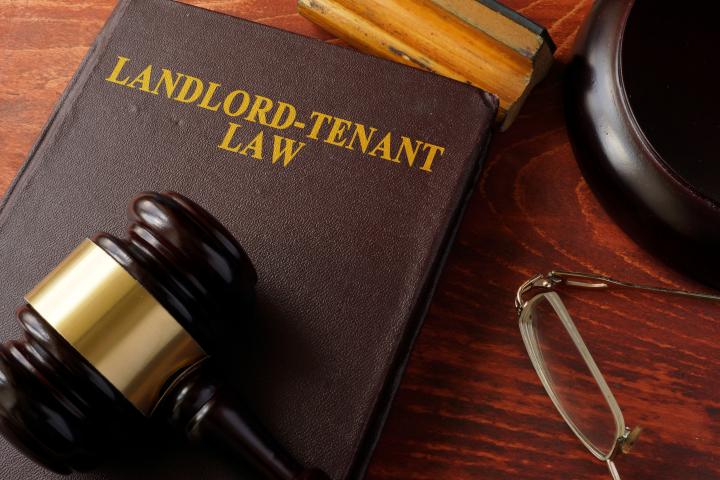 Rent Arrears Protocol
Rent Arrears Protocol- When bringing a claim for possession based on rent arrears a social landlord (this protocol does not apply to private landlords) must use the “Pre-Action Protocol for Possession Claims Based on Rent Arrears”
- This details what assistance the landlord must give the tenant prior to commencing proceedings to recover rent arrears. When deciding what order to make against the tenant the Court will take into account if the protocol has been followed.
- Any failures by the landlord to follow the guidance within the Protocol can be used by the tenant as mitigation against the landlord’s possession claim.
-
 REPAIRS
REPAIRSREPAIRING OBLIGATION (Landlord and Tenants Acts 1985)
- This is one of the mandatory obligations. Nowadays a tenant can rely on the tenancy agreement which specifies the landlord’s obligation to undertake some repairs which are mandatory. The landlord cannot avoid or ignore them.
Right to a home in repair
- The Landlord and Tenant Act 1985 provision impose the responsibility to landlords to repair or keep in repair the property they let. The tenants will have the right under the same provision to hold the landlords accountable for their responsibility under the tenancy agreement. The tenant will be able to enforce these responsibilities if they are not meet.
Meaning of repair and disrepair
- The word repair should be distinguishing in the way that the work done should be repair, renewal, maintenance, or improvement. Where necessary, it will be up to the court to decide which is which. We can speculate that repair means the restoration where renewal or replacement of less important than but related or supplementary part of the whole, while renewal is the complete reconstruction of the whole.
The Obligation
- LTA Act 1985.s11 (stands for Landlord and Tenant Act 1985.s11) which has been amended by the HA 1988 (Housing Act 1988) for tenancy starting on or after the month of January 15, 1989.
The landlord is to keep in good working order the structure of the property, which includes:
- Drains
- Gutters
- External pipes
To keep in good working order the installation of:
- The water supply
- Gas and electricity supplies.
To keep in good working order the sanitation of the building which includes:
- Basins
- Sinks
- Baths
- Any sanitary conveniences
The term keeps in repair:
- Implies that it is a continuing obligation and duty for the landlord to keep up with the above repairs, maintain and provide a good living standard of the accommodation to the tenant for the duration of the tenancy.
Keep in proper working order:
- A property can only be leased, if at the beginning of the tenancy the relevant installations are in good working order and meets the required living standard. If knowingly the landlord leases the property in disrepair or with a design fault or the installation never properly worked prior to the lease, the landlord will be in breach of the tenancy agreement.
The installations in the property:
- The landlord is obliged to keep in repair and in good working condition the following installations: the supply of water, gas, electricity, sanitation, heating, and hot water as well as gas pipes, water pipes, water tanks, electrical wiring, radiators, boilers, and other heating installations such as vents for underfloor heating. Not that they are all under the landlord’s repair obligation.
The standard for Section 11 repairs:
- The repairs in or outside of the property, (dwelling house) mentioned in the tenancy agreement by section 11s, are subject to the properties condition, its age, character, life expectancy and where it is located. Bear in mind that these qualified requirements may also require an expert to check the facts.
- A landlord has the right to undertake any repair in the manner he/she sees fit especially if the new provision may not have been expected.
- The landlord is entitled to choose the cheapest option if it is within his limit.
- If the fitting or installation which needs repairing is beyond economic repair, there is a duty from the paying party to replace “what needs to be replaced” with the nearest equivalent item. There is no obligatory requirement to upgrade, to fit the latest model or even bring the item up to the current standard unless it is required by law or in accordance with the any mandatory regulations.
- It also implies that the quality or standard of repairs is not higher for the social landlord than it is for the private landlord or the private sector.
-
 Savings Restrictions
Savings RestrictionsThe first £6,000 of any investments or savings will not be taken into account when calculating entitlements to Housing Benefit.
Any savings of investments or savings in excess of £16,000 will prohibit the receipt of Housing Benefit or Council Tax Benefit.
-
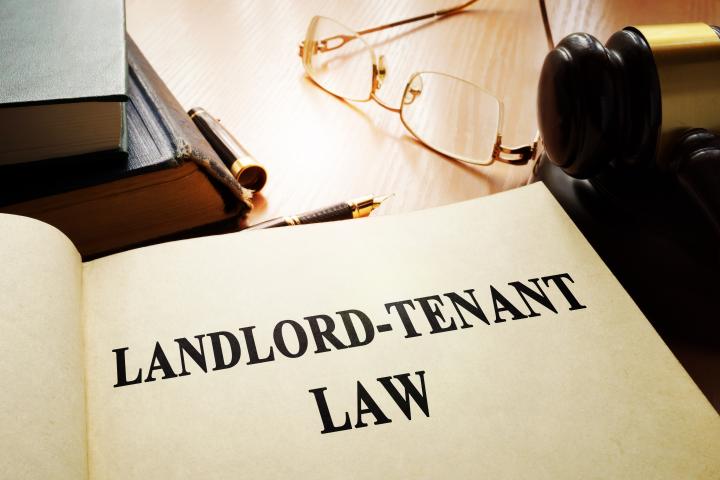 Secure Tenancy – Housing Act 1985
Secure Tenancy – Housing Act 1985Tenancies which are granted to an individual by a public body. The property must be the individual’s principle or only home as defined in Section 79(1) Housing Act 1985.
Section 80 Housing Act 1985 details the type of landlords classed as secure:
A development corporation
A housing rent trust
A local authority
An urban development corporation
Features of a Secure Tenancy
There are no restrictions on what rent can be charged
A Section 8 Notice of Seeking Possession must be served by the landlord prior to any application to Court for possession.
Possession proceedings must be issued within 12 months of the Section 8 Notice being served.
For possession to be gained one or more of the statutory grounds of possession set out in schedule 2: Housing Act 1985 must be met. These grounds are discretionary grounds.
The tenant can surrender the tenancy by mutual agreement or by serving a Notice to Quit on the landlord. This will have the effect of terminating the tenancy.
-
 Standard Possession Procedure Claims
Standard Possession Procedure ClaimsClaim Form N5 and Particulars of claim on a Form N119
- are to be used by a landlord who is claiming possession based on the grounds within the Rent Act 1977 for Rent Act Tenants, Housing Act 1985 for Secure tenants and the Housing Act 1988 for Assured and Assured shorthold tenants as amended by the Housing Act 1996.
- Copies of the Claim Form, Particulars of Claim and any supporting documents will be sent by the Court to the tenant. A response pack including an Acknowledgement of Service Form and a Defence form will also be sent.
- If any of the grounds for possession are disputed by the tenant, they are required to complete the Defence form and file it with the Court within 14 days. If sufficient time is not available for the tenant to file a defence an Acknowledgement of Service form should be sent back to the Court which will allow an extra 14 days for a defence to be filed.
Acknowledgement of Service.
- For more time to file a defence a tenant may file an acknowledgement of service. The general period for filing this acknowledgement where the tenant is served with a claim form is 14 days after service of the particulars of claim; and in any other case, 14 days after service of the claim form.
-
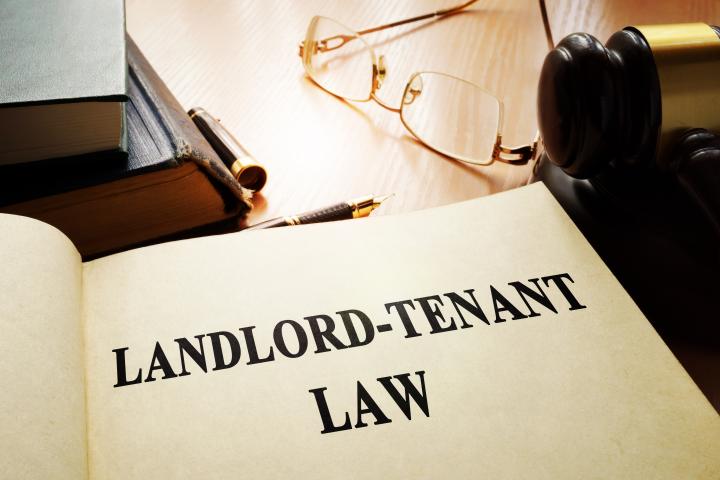 Statutory Tenancy
Statutory TenancyA Statutory Tenancy begins if a protected tenant remains in the property at the end of contractual term following a valid notice to quit or a notice of rent increase. The same terms and conditions will apply.
The landlord can only apply for possession once the tenancy becomes statutory. Schedule 15 of the Rent Act 1977 contains the grounds on which a possession can be sought.
The grounds can either be Mandatory or Discretionary.
Mandatory Grounds
If the landlord can prove a breach in the terms of the tenancy than a court must order that the tenant gives up possession.
Discretionary Grounds
Discretion can be used by the court in regard to the facts to determine if a possession order is made or not.
-
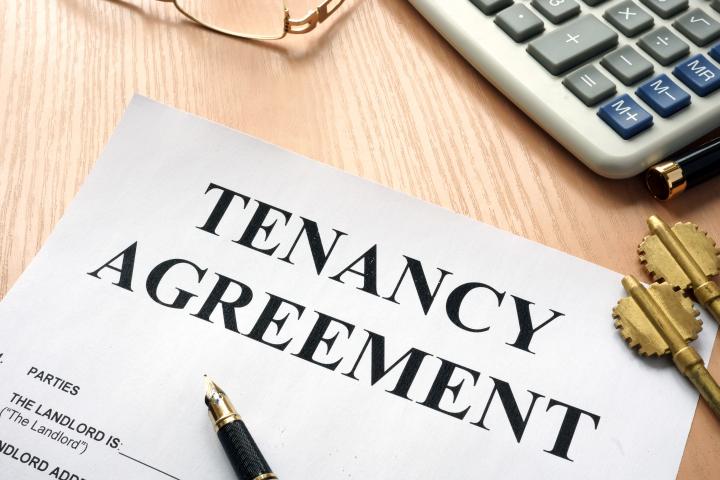 Subsequent to the Hearing.
Subsequent to the Hearing.The tenant will receive a copy of the possession order subsequent to the hearing.
This will detail what order the judge has made, the date that the tenant is required to leave the property, details of any money orders made and if there are any further costs.
If the tenant does not leave the property on the laid down date then the landlord must apply for a warrant of eviction to lawfully evict the tenant. The landlord cannot remove the tenant without this warrant.
-
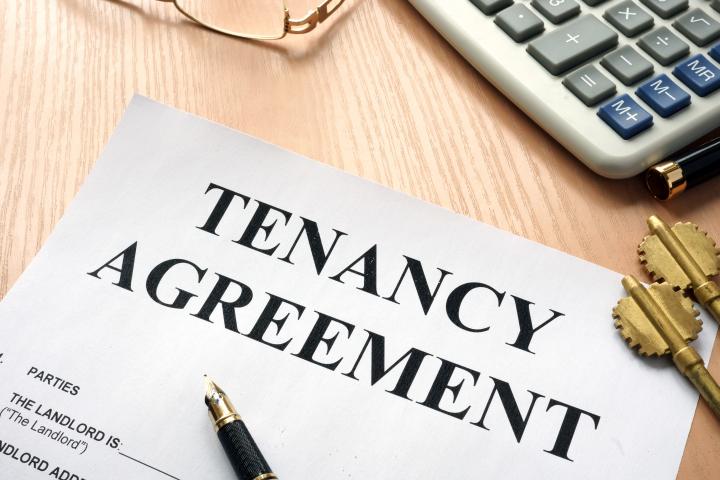 Tenancy Agreement
Tenancy AgreementWhen a tenant’s credit checks are deemed satisfactory and accepted by a checking agency or the landlord, the tenant is required to sign a tenancy agreement by the landlord or estate agent acting on behalf of the landlord.
The tenancy agreement is a legally binding document which sets out the legal duties and obligations of the landlord and tenant.
The tenant must request in writing to the landlord or the estate/letting agent to be provided with a tenancy agreement if this has not been provided at the beginning of the lease.
The letting agent/landlord must provide a written statement of the following terms of the tenancy:
The date on which the tenancy begins or takes effect.
The total rent to be paid and the dates on which the rent is due.
Any terms relating to rent review; the tenancy agreements fixed term, and the duration of such term.
Failure to provide this information following a formal request is an offence under;
Section 20 A (4) of the Housing Act 1988 as introduced by section 97 of the Housing Act 1996.
(4) A landlord who fails, without reasonable excuse, to comply with a notice under subsection (1) above within the period of 28 days beginning with the date on which he received the notice is liable on summary conviction to a fine not exceeding leval4 on the standard scale.
In the case where the tenancy agreement is done verbally/orally, the landlord is required by law to provide the tenant with a rent book and/or receipts for rent payments. A landlord will be committing a criminal offence if they fail to provide the tenant with these documents or proof of monies received.
-
 Tenancy Deposits (Part 1)
Tenancy Deposits (Part 1)Tenancy deposit What are the requirements
- The tenancy deposit must be registered by the landlord / letting agents with at least one of the deposit scheme in the United Kingdom.
- The housing (tenancy deposits) specified that the tenant and other people involve in the tenancy must be given housing tenancy deposits prescribed information order 2007.
- The tenants and other people involve in the tenancy deposits should be given, documents of the scheme.
- Section 213 of the housing act 2004 clearly stipulate that each of these requirements must be applied within 30 days from receipt of the tenancy deposit. The landlord / letting agent are ultimately responsible to make sure that the time limit is observed.
Prescribed information of the tenancy deposit
- The housing (tenant Deposit) (prescribed information) order sets out the exact information requirement to be contained In the Prescribed information that is given to tenant.
- The Act: Prescribed information for the purpose of section 213(5) of the housing Act 2004
- Details of the authorised tenancy scheme dealing with the tenancy deposit.
- The name, address, email, and complete address
- The landlord must be supplied with the written information explaining the meaning and application of the provision contained in the sections 212 – 215 of and schedule 10 to the act;
- The process which describes the way the deposit amount should be repaid to the tenant at the end of the tenancy.
- The process to follow in the event that both tenant and landlord are in disagreement at the end of the tenancy.
- The name(s), address(s), email address(s) and other contact details of any relevant person(s) in connection with the tenancy.
The correct course of action available to facilitate disputes in relation to the deposit without resorting to litigation, using all available documents and information which describe the circumstances in which the deposit has been paid. Information such as:
The exact sum paid.
- The address of the property to which the deposit scheme and tenancy are registered.
- The names, address(s), telephone or mobile number(s), email address(s) and website address if any, and any other information that helps identify the landlord and his/her location or place of business at the end of the tenancy.
- The name(s) of tenant or tenants, the address(s), the telephone or mobile number(s), the email address(s) and any other information or documents that can help identify the tenant(s) location(s) or place of business at the end of the tenancy.
- The particular way where the full or partial amount of the deposit is being kept by the landlord/ letting agent as described in the terms of the tenancy agreement.
- The document or form used. Usually, a certificate signed by the landlord/letting agent as well as the tenant(s) indicating that all parties understand the information contained therein and acknowledge its accuracy. Furthermore, it is a recognition of the act which highlights the proceedings when both tenant or landlord are not contactable at the end of the tenancy.
Tenancy Deposit Scheme.
- At the beginning of a tenancy, a landlord/letting agent must provide a certificate when a deposit has been collected in connection with a lease/tenancy agreement. It is the acknowledgement that the deposit is protected.
- Deposit Protection Certificate (DPC). This is a certificate provided to the tenant(s) by the landlord(s) which details the information that is required on the certificate. These details will include the landlord/letting agent names, the tenant(s) name(s) the deposit amount, telephone number(s) etc…
Search by alphabetical topics
All
ABCDEFGHIJKLMNOPQRSTUVWXYZ




